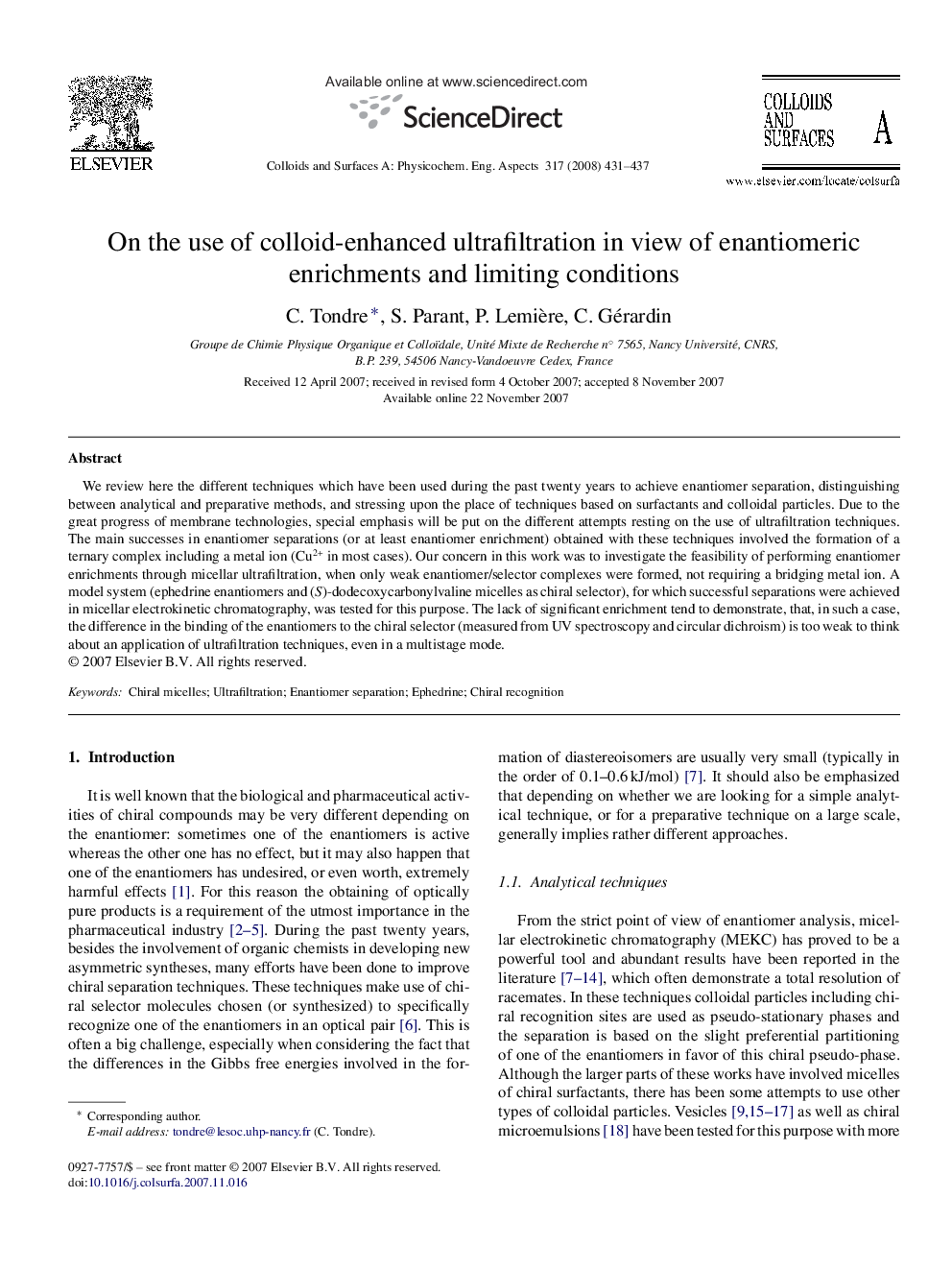| Article ID | Journal | Published Year | Pages | File Type |
|---|---|---|---|---|
| 596822 | Colloids and Surfaces A: Physicochemical and Engineering Aspects | 2008 | 7 Pages |
Abstract
We review here the different techniques which have been used during the past twenty years to achieve enantiomer separation, distinguishing between analytical and preparative methods, and stressing upon the place of techniques based on surfactants and colloidal particles. Due to the great progress of membrane technologies, special emphasis will be put on the different attempts resting on the use of ultrafiltration techniques. The main successes in enantiomer separations (or at least enantiomer enrichment) obtained with these techniques involved the formation of a ternary complex including a metal ion (Cu2+ in most cases). Our concern in this work was to investigate the feasibility of performing enantiomer enrichments through micellar ultrafiltration, when only weak enantiomer/selector complexes were formed, not requiring a bridging metal ion. A model system (ephedrine enantiomers and (S)-dodecoxycarbonylvaline micelles as chiral selector), for which successful separations were achieved in micellar electrokinetic chromatography, was tested for this purpose. The lack of significant enrichment tend to demonstrate, that, in such a case, the difference in the binding of the enantiomers to the chiral selector (measured from UV spectroscopy and circular dichroism) is too weak to think about an application of ultrafiltration techniques, even in a multistage mode.
Related Topics
Physical Sciences and Engineering
Chemical Engineering
Colloid and Surface Chemistry
Authors
C. Tondre, S. Parant, P. Lemière, C. Gérardin,
